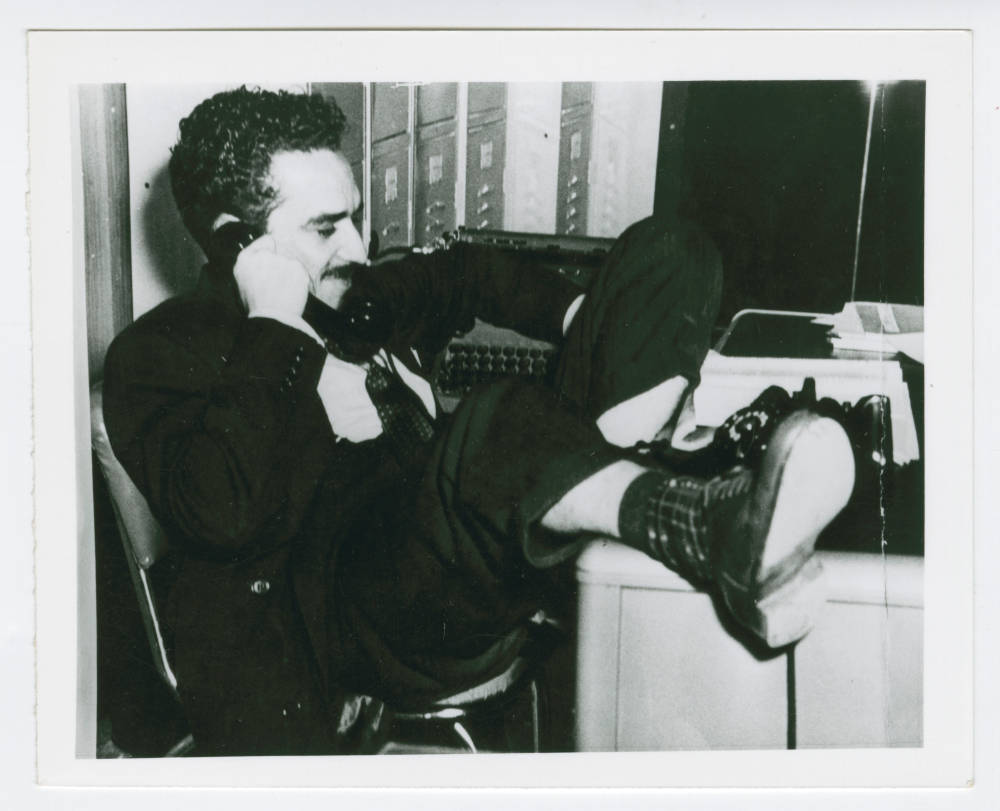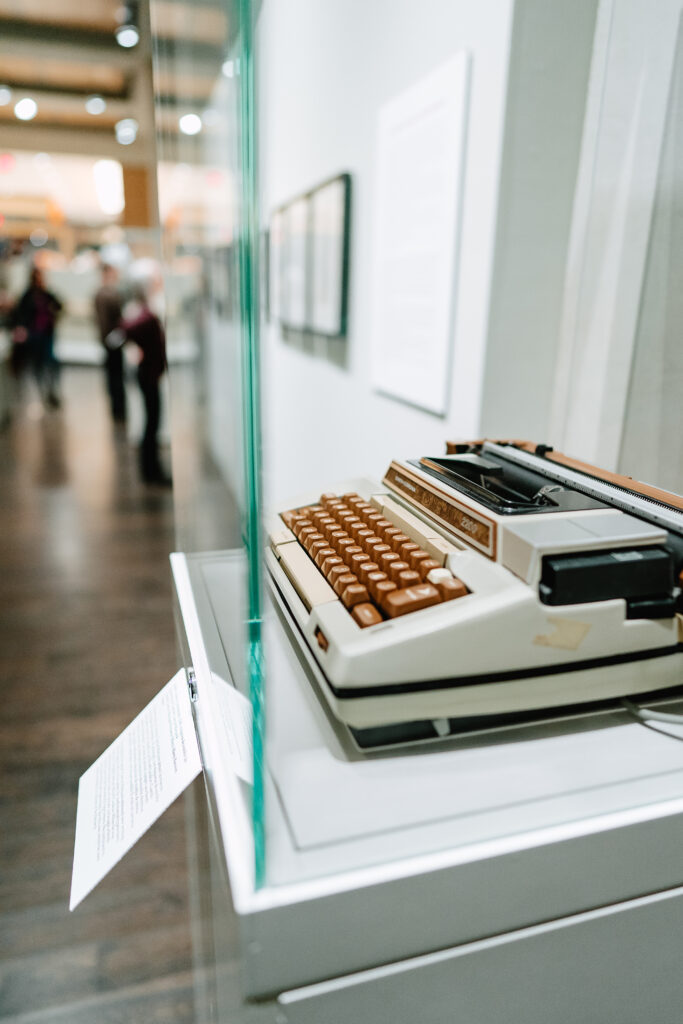
The first-ever exhibition of the archive of Nobel Prize-winning Colombian author Gabriel García Márquez (1927–2014) will reopen Aug. 25 at the Harry Ransom Center on The University of Texas at Austin campus after an extended closure related to the COVID-19 pandemic.
The much-anticipated show, featuring more than 300 items from the author’s personal collection housed at the Center, was called a “must-see” by Culture Map Austin before it closed in mid-March, 2019.
Thousands of visitors were able to visit the bilingual exhibition, “Gabriel García Márquez: The Making of a Global Writer,” but many more will now have an opportunity to experience the first exhibition drawn from the archive of García Márquez, who won the Nobel Prize for literature in 1982.
García Márquez, became an international success soon after the publication of his 1967 novel, “One Hundred Years of Solitude” (“Cien años de soledad”). The global phenomenon of the novel is central to the exhibition curated by Álvaro Santana-Acuña, author of “Ascent to Glory: How ‘One Hundred Years of Solitude’ Was Written and Became a Global Classic” (Columbia University Press, 2020).
“Generation after generation, readers find in his works, characters, situations, events, feelings, memories… that are meaningful to them,” Santana-Acuña said.

Glass Tire’s Christopher Blay wrote, “What crystalizes [in the exhibition] is that García Márquez’s life and work tapped into a universal vision of the human experience.”

The García Márquez archive was acquired by the Ransom Center in 2014 and includes original manuscript material, predominantly in Spanish, for 10 books, from “One Hundred Years of Solitude” (1967) to “Love in the Time of Cholera” (1985) to “Memories of My Melancholy Whores” (2004); more than 2,000 pieces of correspondence; drafts of his 1982 Nobel Prize acceptance speech; more than 40 photograph albums documenting all aspects of his life over nearly nine decades; the typewriters and computers on which he wrote some of his most beloved works; and scrapbooks meticulously documenting his career via news clippings from Latin America and around the world.

In 2017, the Center published more than 27,000 images of manuscripts and photographs from the collection, creating the Gabriel García Márquez digital collection with the support of a Digitizing Hidden Special Collections and Archives grant from the Council on Library and Information Resources through the Andrew W. Mellon Foundation. Since the García Márquez archive opened for research in 2015, it has become one of the Ransom Center’s most frequently circulated collections. Gabriel García Márquez: The Making of a Global Writer”will be on view in Austin through Jan. 3, 2021, after which the exhibition will travel to the Museo de Arte Moderno in Mexico City.

The Center’s reading room is now open for research, and the special exhibition galleries, the Gutenberg Bible, the Niépce Heliograph, and the Center’s Frida Kahlo self-portrait with thorn necklace and hummingbird will be open daily beginning Wednesday, Aug. 25.
Please stay home if you are sick. Masks and social distancing are strongly recommended while visiting the Harry Ransom Center. This is in accordance with CDC guidelines and The University of Texas at Austin updated guidance effective August 6, 2021.














![Cien años de soledad [One Hundred Years of Solitude], 1966. Gabriel García Márquez Papers, Harry Ransom Center.](https://sites.utexas.edu/ransomcentermagazine/files/2021/08/GGM-web-png-1024x1024.jpg)
